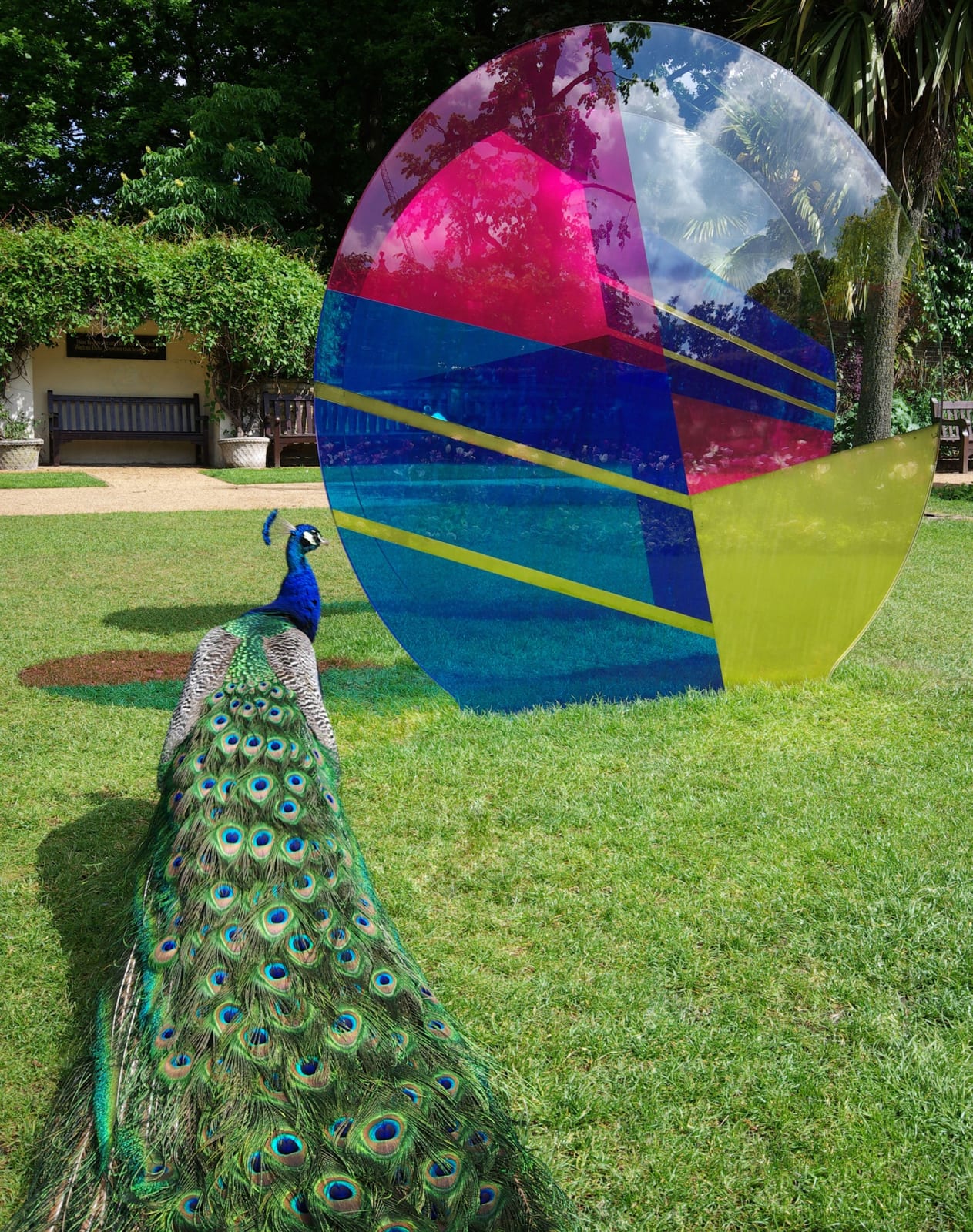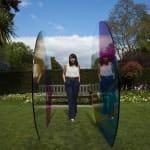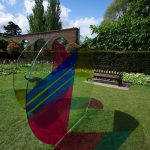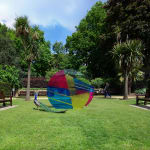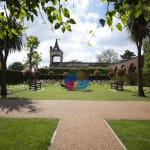Eccentricity of Zero, Holland Park, London, 2013
Further images
To celebrate and highlight the work of female sculptors as part of a three-year collaboration, the Royal Borough of Kensington and Chelsea and the Royal British Society of Sculptors are delighted to present Sinta Tantra's ambitious public art commission for Napoleon Gardens in Holland Park, The Eccentricity of Zero.
The sculpture, comprising two monumental glass circles overlaid with geometric and triumphantly coloured sections, echoes both the rigid lines of the formal gardens surrounding it and its riotous floral displays. It playfully invites people to walk inside it and to bathe in the pools of the coloured light cast both on the ground and on the bodies of people passing through. The work becomes a giant sundial casting kaleidoscopic patterns that crescendo and decrescendo as the days and seasons pass, fusing fleeting time with the permanence of material. The title, The Eccentricity of Zero, refers both to geometry and to the refreshing flamboyance of the work. In geometry, ‘eccentricity' is the measure of the deviation of a curve from the perfect circle and the circle's ‘eccentricity is zero'. The sculpture, however, boldly asserts itself not just as a perfect circle, but as a place where light and colour, surface and depth collide in an engaging and joyous way.
Tantra says, "The sculpture plays on the idea of the garden as a labyrinth, of lovers chasing each other, of veiled flirtations and words left unspoken. The round glass panels act like fluid screens where organic, human and architectural structures are contained, heightened and reflected. As sunlight passes through the geometric spreads of colour, nature and the viewer become incorporated into the work and act as the catalysts to enliven it.”
To celebrate and highlight the work of female sculptors as part of a three-year collaboration, the Royal Borough of Kensington and Chelsea and the Royal British Society of Sculptors are delighted to present Sinta Tantra's ambitious public art commission for Napoleon Gardens in Holland Park, The Eccentricity of Zero.
The sculpture, comprising two monumental glass circles overlaid with geometric and triumphantly coloured sections, echoes both the rigid lines of the formal gardens surrounding it and its riotous floral displays. It playfully invites people to walk inside it and to bathe in the pools of the coloured light cast both on the ground and on the bodies of people passing through. The work becomes a giant sundial casting kaleidoscopic patterns that crescendo and decrescendo as the days and seasons pass, fusing fleeting time with the permanence of material. The title, The Eccentricity of Zero, refers both to geometry and to the refreshing flamboyance of the work. In geometry, ‘eccentricity' is the measure of the deviation of a curve from the perfect circle and the circle's ‘eccentricity is zero'. The sculpture, however, boldly asserts itself not just as a perfect circle, but as a place where light and colour, surface and depth collide in an engaging and joyous way.
Tantra says, "The sculpture plays on the idea of the garden as a labyrinth, of lovers chasing each other, of veiled flirtations and words left unspoken. The round glass panels act like fluid screens where organic, human and architectural structures are contained, heightened and reflected. As sunlight passes through the geometric spreads of colour, nature and the viewer become incorporated into the work and act as the catalysts to enliven it.”
Literature
About the work33
of
33

